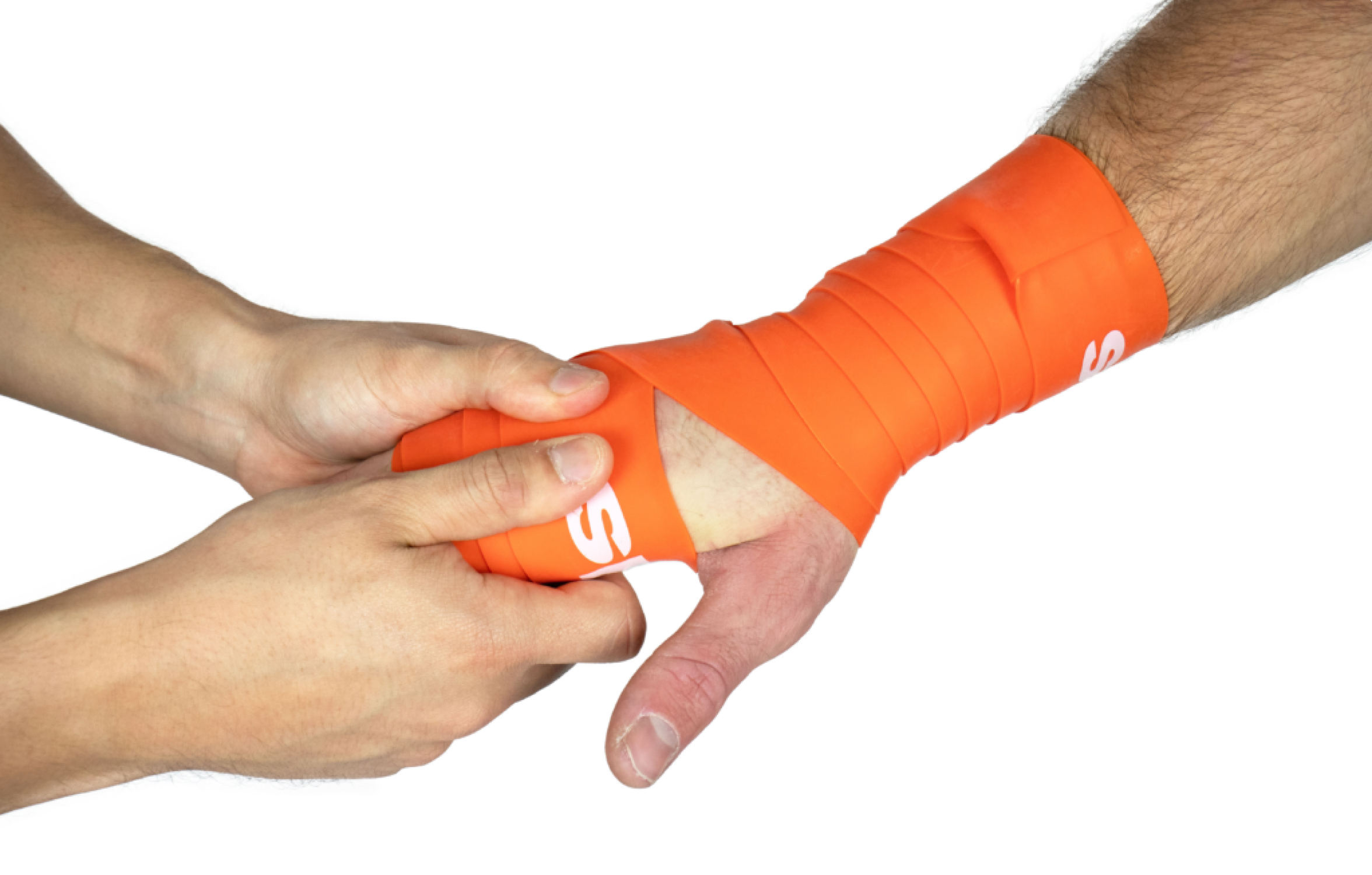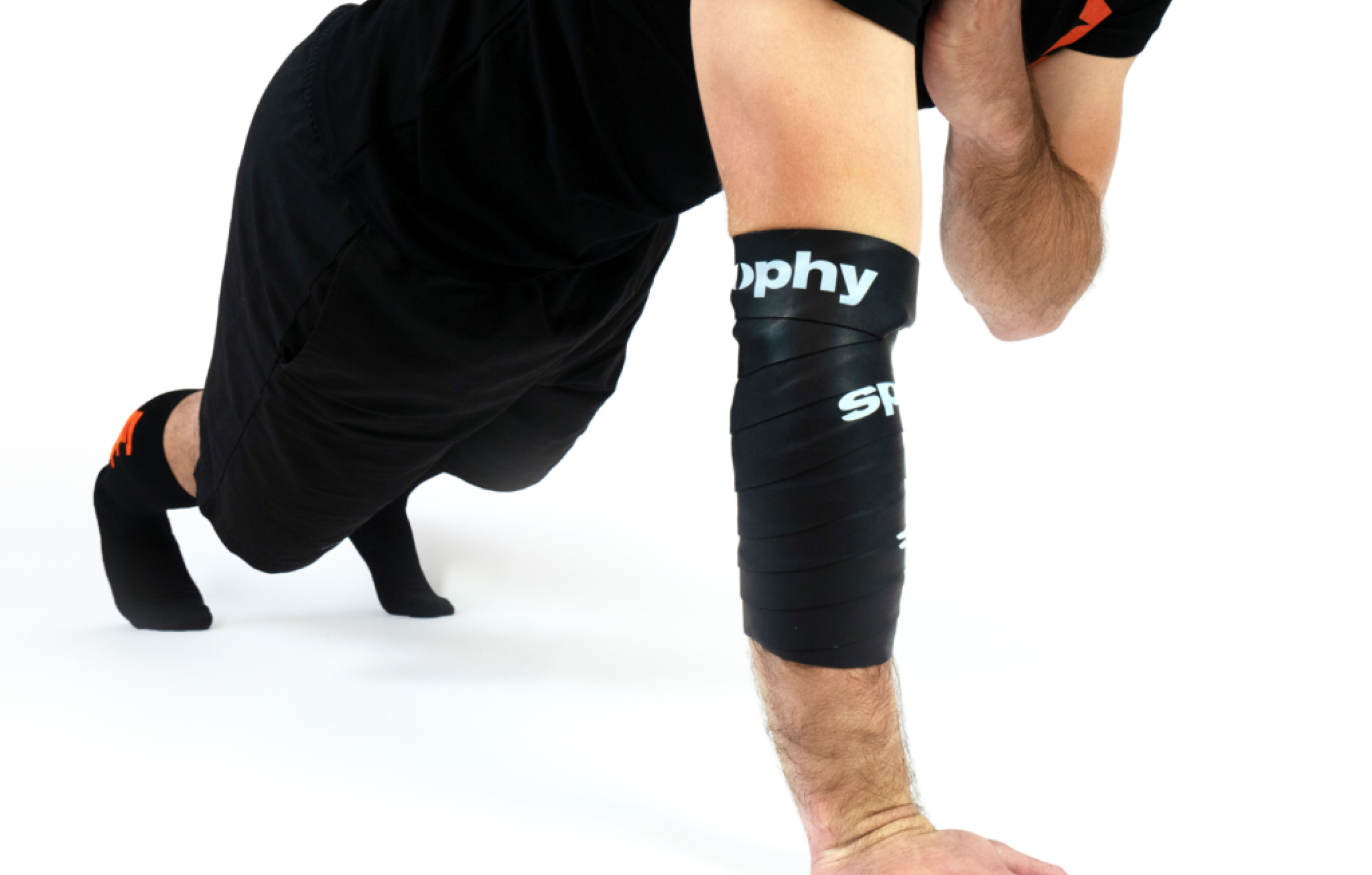We use cookies on our website.
Some of them are necessary for the website to function, but you can decide about the others yourself.
The “tissue flossing” or “flossing” treatment method is becoming increasingly popular with sports coaches, physiotherapists, and the public. This method is well-known thanks to American researcher and physiotherapist Dr. Kelly Starrett who has published the now world-famous book “Becoming a Supple Leopard”. In this book, he pointed out the possibilities of using flossing belts to improve range of motion, performance and injury prevention. Since then, several other publications and research dealing with the “tissue flossing” method.
"Tissue flossing" is a modern therapeutic method that uses specially designed elastic rubber bands, which are used to treat musculoskeletal problems, to positively affect the musculoskeletal, cardiovascular, nervous, and lymphatic system of the human body, to promote regeneration, and to prevent injuries of musculoskeletal apparatus. The method is used in global and domestic physiotherapy, but it will certainly find its place in the sports training of professional or amateur athletes.
The main effect of therapy is primarily a combination of soft tissue or joint compression, which is caused by tightly wrapping the elastic bands around the required treatment site, therapeutic treatment that is performed with the applied flossband, and subsequent compression release by removing the applied flossing tape.
 Example of bandaging an upper limb using the tissue flossing method
Example of bandaging an upper limb using the tissue flossing method
Therapeutic treatments with applied flossband include joint mobilizations to quickly remove joint blockages, soft skin, subcutaneous and fascia treatments to improve interlayer displacement, or ischemic compression to effectively remove trigger points. However, the application of flossband tape can be combined with all types of movement, whether passive or active movement, with progressive movement load, proprioceptive training, post-isometric relaxation, or proprioceptive neuromuscular facilitation. It is only up to the skills and abilities of the treating therapist to incorporate the “tissue flossing” method into his therapeutic concept and therapeutic unit. Properly selected and performed flossband therapy can reduce pain, improve blood circulation, improve soft tissue displacement and subsequently improve athletic performance.
One of the advantages of the “tissue flossing” method is its easy combinability with other therapeutic concepts and rehabilitation aids. The therapist can skillfully link the application of flossing with therapeutic concepts such as the PNF method, DNS, or with the sports-specific training of his ward. Another advantage of this method of treatment is high efficiency, the possibility of therapy in demanding conditions, and a relatively large area of treatment that helps the therapist save time, which is needed for therapy. A big advantage is the possibility to teach the patient the use of flossbands, thanks to which there is an option of effective autotherapy without the presence of a therapist. Flossbands are easy-to-use, compact, and virtually indestructible therapy tools that a therapist or athlete can carry with them at all times.
 Example of an exercise with wrapped tape
Example of an exercise with wrapped tape
There are a number of studies and surveys that demonstrate a positive effect of tissue flossing on active and passive range of motion, a positive effect on delayed onset muscle soreness (DOMS), and a proven positive effect on subjective improvement in freedom of movement. The effect of therapy is still not clearly demonstrated. However, many authors describe several theories that could explain the positive effects of a given treatment method. One of the most mentioned theories is the gate control theory of pain, which can be used to explain the analgesic effect of flossband application. Due to the dispersive effect of the application of flossbands, the synovial fluid liquefies and the joint blockage is subsequently removed, the intercellular fluid liquefies and consequently improved displacement of individual deep fascia layers or reactive hyperemia effect, which causes the treated site to bleed more after removal of the flossing tape. Other theories of the effect include the removal of pathological crosslinks, the “sponge effect” of soft tissues, or the promotion of afferentation from the treated site. The positive effect of tissue flossing therapy is immediately observable by the therapist within a few tens of seconds, maximum minutes.

Flossband can be used at any stage of rehabilitation. Therefore, it is applicable to most acute and chronic musculoskeletal problems. In post-traumatic conditions, the flossband can be used adequately for the given stage of healing, for example in the alarm or inflammatory phase to reduce swelling or in the proliferative phase to create an adequate impulse for soft tissue regeneration.
You can watch our videos or sign up for a course led directly by a physiotherapist and the founder of a two-day course called “Therapeutic use of Spophy Flossband”.